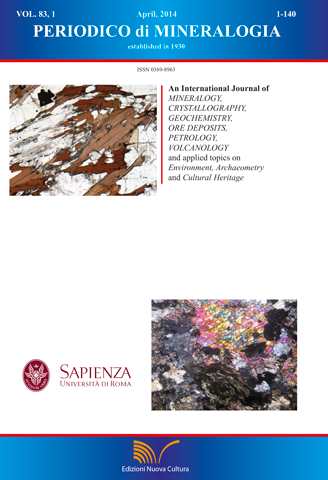Elemental mobility and mass changes during alteration in the Maher-Abad porphyry Cu–Au deposit, SW Birjand, Eastern Iran
DOI:
https://doi.org/10.2451/2014PM0004Keywords:
Mass changes, isocon, Cu-Au porphyry, Alteration, Maher-Abad, IranAbstract
The Maher-Abad copper and gold porphyry deposit is located in the east of Iran, and is genetically related to the intrusion of upper Eocene granodiorite into quartz-monzonitic stock and andesitic volcanoclastics. Four types of shell-like and almost concentric alteration zones were developed during three stages, (i) an early (potassic and propylitic), (ii) a transitional (phyllic), and (iii) a late (argillic) zone. In this study, the mobility of elements and changes of mass and volume are considered quantitatively by applying the isocon method of geochemical mass balance within these alteration zones. Isocon plots delineate that the studied alteration system was non-mass-conservative and the rate of volume reduction display an increasing trend from the early to the late stages of alteration processes. Further considerations elucidate that the concentration values of K and Na in the potassic zone reflect the occurrence of hydrothermal biotite and sodic replacement on the rims of plagioclase phenocrysts. Besides, addition of copper and gold to this zone is consistent with Cu-bearing sulfide mineralization. The peculiar geochemical aspect of the propylitic zone is the relative decrease of CaO owing to the high rate of destruction of calcic plagioclase in contrast to the formation of Ca-bearing hydrothermal minerals (e.g., epidote and calcite). In the phyllic zone, both chloritization of biotite and decomposition of plagioclase led to the depletion of ferromagnesian oxides and alkalies (Na2O and CaO). The addition of Si is consistent with the widespread silicification which is a major feature of phyllic alteration. All the major oxides were depleted in the argillic alteration zone due to the total destruction of the original ferromagnesian minerals and feldspars.


